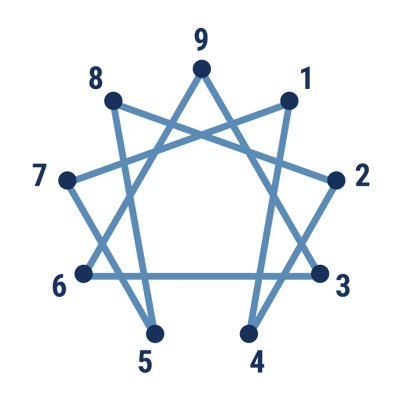Download a PDF of this article
Every organization has its share of complaints and, while every company would prefer not to have them, complaints do play an important part in the organization’s ability to continuously learn, improve and develop long-term client relationships. Complaints provide a feedback mechanism that help organizations rapidly and inexpensively shift products, service style, and/or market focus to meet the needs of the customer or continuously improve internal systems and processes that make it easier for the client to work with the organization. Complaints are one of the primary means to communicate directly with customers and should be welcomed as opportunities to engage in a dialogue with the client.
Technical Assistance Research Programs (TARP), an Arlington-based market research firm, is the most widely quoted research group on complaints. Their work sheds additional light on the value of complaints.
“TARP found that if companies can get customers to complain directly to them, they can minimize damage. Customers who complain about their dissatisfaction are also more likely to repurchase, even if their complaint is not handled satisfactorily. In fact, TARP concluded that customers who do not complain are the least loyal customers. Those who complain may become the most loyal customers. They are more likely to tell their inner circle how pleased they are that the company addressed their complaint, even if it wasn’t resolved to their liking. If the problem is resolved to their satisfaction, they will tell even more people about the successful resolution of their problem.”
TARP found that if the problem is resolved successfully, customers will tell five others, whereas if customers receive good service initially, they will only tell three others.” Likewise “the average person who has a complaint tells 9-10 people about it with 13% telling more than 20 people.” (Barlow, J. and Moller, C, A Complaint is a Gift, p. 41-42.)
Ron Zemke, in his book, Service Recovery: Fixing Broken Customers, suggests that the key to handling complaints is to handle the complaint on the first contact. Research performed by TARP, found that “satisfaction diminishes when the customer must have more than one contact or talk to more than one person.” (Zemke, p. 27)
The goal, therefore, of handling complaints should not be to discourage or decrease the amount of complaints, rather to develop a service recovery process that resolves the complaint preferably during the first contact with the company. If a second or third contact is needed or if too much time lapses between contacts, dissatisfaction can and will increase. While the front-line staff member who receives the initial call may not be able to resolve every call, every effort should be made to identify the most common complaints, and train and empower the office staff to handle and/or resolve as many of the complaints as possible. Before any training can occur an organization must have a defined relationship recovery process that clearly defines how the organization will handle, resolve and learn from complaints.
Key Elements of a Relationship Recovery Program
A relationship recovery program to be success should include the following seven elements:
- Single Point of Contact – A single point of contact who is responsible for ensuring that resolution occurs in a timely and satisfactory manner. This contact may not be the one who resolves the issue but this individual ensures that resolution occurs and that the client is satisfied after the issue is resolved.
- Rapid Response Team – A Rapid Response Team is identified and clearly understands their role when a relationship recovery effort is initiated by the client.
- Communication/Escalation Plan – A clearly defined communication plan is established that ensures issues and resolution are communicated to the right internal resources at the appropriate time in the recovery process. Often called an Escalation Plan, this process ensures that issues get elevated to the right levels within the organization so that resolution is achieved and the client relationship stays in tact.
- Documentation – Relationship Recovery efforts should be documentation in the client’s record to not only maintain an historical record of interactions with the client but to support organizational learning and improvement.
- Debriefing Protocol – The value of a complaint is that the organization has an opportunity to learn from and improve upon its services to the client. Without a defined process for debriefing recovery efforts, complaints remain an ‘event’ rather than an opportunity for organizational improvement. Debriefing of relationship recovery efforts, when done right, not only builds team involvement and commitment but ensures complaints are transformed into valuable company learnings.
- Emphasis on SAVES – Tracking and Reporting of SAVES made by relationship recovery efforts keep employees focused on the desired end result – a very satisfied customer. A SAVE is defined by the customer, after the resolution, rating his/her level of satisfaction as ‘Very Satisfied’ with recovery efforts.
- Celebration and Rewards – Teams who work together to create SAVES should celebrate their successes and be rewarded for the ‘total’ effort made to create a SAVE. Celebrations and Rewards reinforce the desired behaviors that support successful relationship recovery efforts. Celebration and rewards need not be monetary only – there are many creative and inexpensive ways to celebrate and reward desired performance! Often companies forget this last step which is crucial for the continuing success of any program a company undertakes. If you want your employees to stay focused on a program of this nature, you must build in celebration and reward. Without it, motivation and commitment to a program wanes and ultimately, the program initiative fizzles out and dies.
Acquiring and keeping satisfied customers requires companies to continuously learn from its interactions with its customers. When a customer complains, he/she is making a statement that the relationship you have is important. Many companies miss this signal – the successful ones have a defined relationship recovery program established and as a result, reap the benefits of stronger, more lasting relationships with their customers.
Theresa Gale is co-owner of Transform, Inc. Established in 1996, Transform, Inc.’s powerful, cutting-edge approach to leadership, sales and client relationship management as well as organizational effectiveness has helped businesses across the country achieve maximum results. For more information, visit www.transforminc.com or call 301-419-2835.



